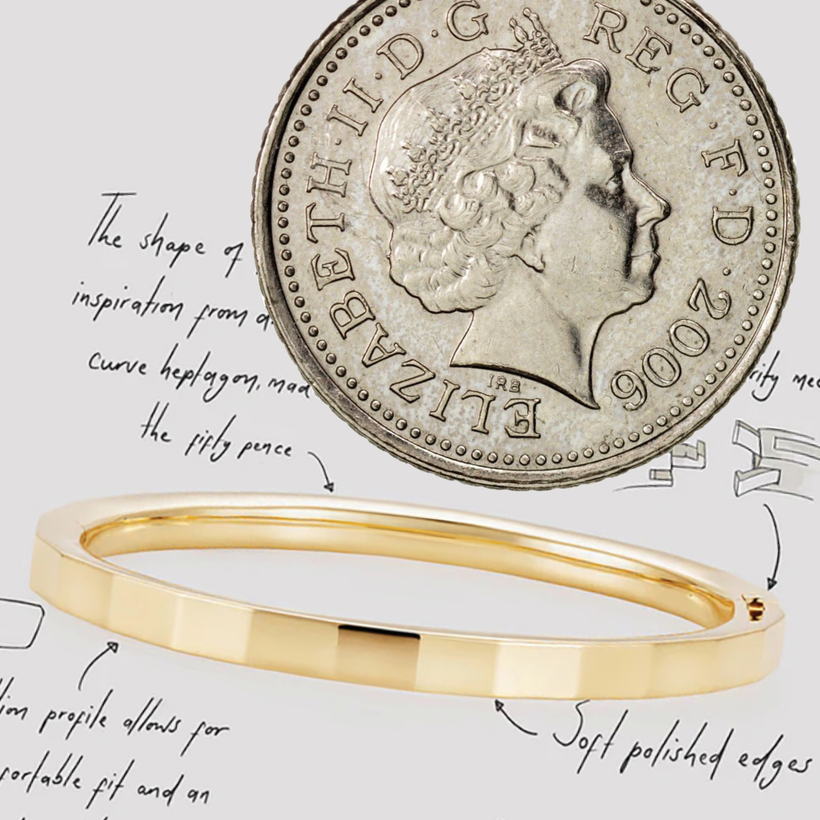Run by the Treasury, the Royal Mint first and foremost produces the U.K.’s coins, which they’ve been doing since the year 886. But these days, with the proliferation of digital banking, fewer and fewer people keep spare change rattling around in their pockets. Coin production is an industry in decline, and so to safeguard its future, the Royal Mint is evolving into other fields.
Today, the home of The Royal Mint, in Llantrisant, near Cardiff in South Wales, is a flurry of activity. Some of its coin-makers are being re-trained to produce fine jewelry for its new luxury brand, 886 by the Royal Mint. And there’s a superstar in charge: creative director Dominic Jones, who has created pieces for Karl Lagerfeld, Rihanna, and Beyoncé, has long been one of the top jewelry designers in the country.

For the U.K.’s oldest company, it’s a remarkably innovative move, especially because all the metal used in the jewelry comes from recycled sources. New machinery from Canadian technology firm Excir recovers precious metals from electronic waste, where 7 percent of the world’s gold is estimated to be trapped. Silver will be recycled from discarded X-rays sourced from the N.H.S.
This material is then transformed into fine jewelry using the same striking process that’s used to make coins—massive presses essentially squeeze it into shape. This is done at a cold temperature and results in a product stronger and denser than other jewelry, because the atoms have been forged together rather than cast (made molten and poured into molds).

The Royal Mint is betting big on this project. They have opened an 886 boutique in the Burlington Arcade, a rarefied shopping corridor in the Mayfair neighborhood of London. Its first collection consists of classic, unisex pieces that are invitingly tactile: gleaming gold hoops, liquid-smooth cuff links, highly polished bangles. Another collection, titled Tutamen, adds a sense of movement with spiral drop earrings and chunky stack-link bracelets in yellow gold. Tutamen takes its name from the Latin “Decus et Tutamen” (an ornament and a safeguard), which was first inscribed on British coins in the 17th century.
There are no logos, no branding—these pieces speak in whispers. Some bracelets have poetry-inscribed rims, and one plain pendant twists in the sunlight to reveal a projected heart. This was inspired by Sir Isaac Newton’s theories on the reflection of light. Once Master of the Mint, Newton left some unfinished work behind him, and 886 has helped carry these ideas forward.

Newton’s era and its history lie behind Jones’s latest collection. Brought in to address the coin-trimming crisis of the 17th century, Newton had to make radical changes. Pancake-flat coins could easily have metal skimmed from their edges, and fraud was so prolific that the U.K.’s currency was dwindling. Such activity was an act of high treason and punishable by death—which meant being burned at the stake for a woman, and hanged, drawn, and quartered for a man.
This didn’t put off one unlucky opportunist, whose stash of coin clippings, known somewhat grotesquely as the “Toenail Hoard,” was recently unearthed in the Forest of Dean. Newton’s answer was to design coins with a 3D milled edge, bringing control to the chaos. This same milled edge is still used in coins today.

Jones’s skill as a designer is to draw on such stories, and to combine them with his own contemporary vision. In the latest collection, he’s taken inspiration from the pound coin from the 90s. “For my generation, it was the coin you wanted for your pocket money,” he says. “It was made up of a hundred penny sweets!”
Cora Corré, Vivienne Westwood’s granddaughter, is a face for the brand. But for Jones, his customer could be anyone from 26-year-old Corré to his 95-year-old grandmother. “She didn’t have a clue who Beyoncé was when I worked with her,” he says with a smile. “But she was so proud when I started working with the Royal Mint.”
Daisy Dawnay is a London-based writer

